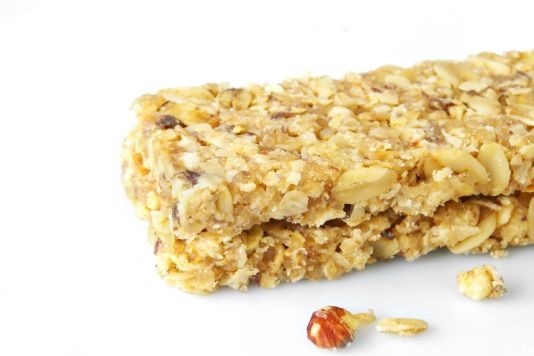Are cereal bars as healthy as they look?

We take a closer look at exactly what's in your cereal bar...
You know the scenario; you're late for work and run out of the house, grabbing a cereal bar from the station, thinking that by resisting that pastry, you've made the healthier choice. But is that bar you’ve bought for a breakfast replacement actually so good for you?
Not as good as they seem
Food quality watchdog, the Food Commission, recently wrote a report highlighting just how much sugar some of these bars contain. For example, a Kellogg's Special K Fruits of the Forest bar is made up of a whopping 39% sugar. To put this into perspective, Haagen-Dazs chocolate ice cream contains about 20% sugar. Pretty shocking!
Additionally, the sugar in these chewy bars sticks to your teeth throughout the day, making you more susceptible to tooth decay.
Registered Dietitian Sophie Clarke points out that a food containing more than 15g of sugar per 100g is considered a high sugar food – that’s about 5g of sugar in your average 35g bar.
Many of these bars are not just high in sugar, but also high in fat. A 37g Chocolate Chip Tracker bar contains just under 9g of fat, accounting for a massive 43% of the calories in the bar! (In a balanced diet, fat should account for about 30% of your calorie intake.)
Excuses
Although commonly known as cereal bars, their manufacturers are deflecting criticism that the bars are not suitable for breakfast by saying they are marketed as “alternative snack bars”, rather than as meal replacements!
How to choose a healthier bar
If you are looking for a healthier cereal bar, the best thing to do is read the label and look at exactly what the bar contains.
Sophie Clarke advises thinking about the bar in the context of your entire day's nutrition. A well planned meal would normally have at least one third of the plate as fruit or vegetables, and the remaining thirds taken up by protein and wholegrain carbohydrates, with minimal added fat and sugar.
If you otherwise eat well, the occasional bar is not going to be a problem, but if you are eating them as a regular meal replacement then consider other convenient snacks such as slice of wholegrain toast with peanut butter and an apple, or yoghurt with fresh berries.
Lower GI
Nutritional Therapist Joy Skipper says to look for bars with a lower GI score which helps to avoid the blood sugar spike and resultant crash from eating high sugar foods.
To do this, look for bars with a higher protein content - protein slows down the glucose entering the blood stream and therefore may sustain energy for longer. So bars that have more nuts and seeds are better that those with lots of cereal and dried fruit (both of which are sugar, in effect).
UK spelt grower, Sharpham Park, has recently launched a granola bar that has a lower GI thanks to the addition of low GI spelt!
Best of the bars
In the interests of research (of course!), I sampled a vast number of cereal bars. Here's what I found:
Sugar ranged from 14% to 43%, protein from 4% to 18% and fat from 4% to 40% (all by weight). Many had added syrup, glucose and honey. Interestingly, most brands I contacted did not have information on the GI score of their bars.
For higher protein with lots of seeds and healthy omega 6 oils, try 9 Bar or Seed Stacked bars.
With 14% (unrefined) sugar by weight, the Nutty Jackson bar by Baileys contained the least sugar, but weighs 65g, double the size of some bars.
Two of the Food Doctor Bars had the least calories at just over 300 per 35g bar.
Overall, however, my favourites are the Nakd Bars, consisting of solely fruit and nuts. They are higher in sugar, but have nothing else added.
Basically treat these bars like you would chocolate or sweets, as a treat, or for an energy boost if doing sports or strenous activities.
What do you think?
What do you buy when you need a healthy snack when on the go?
Also worth your attention
Comments
Do you want to comment on this article? You need to be signed in for this feature